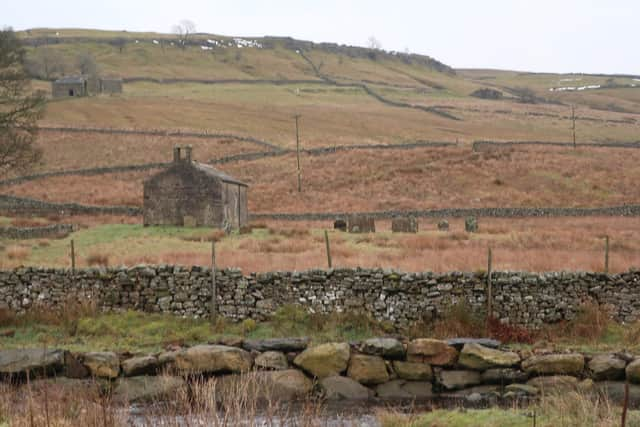Crumbling church in Wensleydale used in Wuthering Heights movie could be restored
The Friends of the Dales has urged the Yorkshire Dales National Park Authority to support proposals to secure the future of Lunds Church, where a chapel is believed to have served the farming community at the head of Wensleydale since at least the early 17th century.
In a letter to the authority, a spokesman for the charity stated those who could recall the church from more than 50 years ago, before its deconsecration, had been “saddened by its deterioration”.
Advertisement
Hide AdAdvertisement
Hide AdThe spokesman said: “This small building is an important part of the cultural heritage of the Dales. The history of its status and its structure over the centuries is an essential aspect of this area at the head of Wensleydale.


“Coming upon this isolated building, in the middle of a field with just a few old gravestones nearby, conveys a sense of place which is difficult to define.”
The listed church, which was substantially rebuilt on the site in the 18th and 19th centuries, is marked as a high priority on the authority’s Buildings at Risk Register, partly due to a long-standing damp problem because of its exposed location and following detrimental works carried out since 1894.
A planning application, for which the authority has given officer support in developing and may provide grant funding for, states the closest landmark, an inn, is about 2km from the church, and its last independent curate was buried in the graveyard in 1842.
Advertisement
Hide AdAdvertisement
Hide AdBefore it was made redundant in February 1981, the building was the smallest church in the Ripon Diocese, seating up to 60 people, and in 2011, it featured in Academy Award-winning writer-directorAndrea Arnold’s movie of Wuthering Heights.
The application documents state: “It is notable that the church does not contain any elements of typical ecclesiastical architecture and may indeed be initially mistaken for a different use type, such as a historical school; externally, only the graveyard gives away its former religious function.
“The strong agricultural context and low-key character are unusual for a church – even within the context of the rural Yorkshire Dales – and they form an important part of its heritage significance of the listed building.”
The documents state proposed works would have “a very positive impact on listed building”, reinstating missing parts of its heritage sand putting measures in place to safeguard the church in the long-term.
Advertisement
Hide AdAdvertisement
Hide AdAlongside extensive works to protect the church from the elements, detailed work backed by research will see its windows and door replaced, an inscription “God is Love” reinstated above the east window, the altar floor and rail reinstated and stone flags relaid.
It is also hoped to reinstate the bell in the bellcote, which was “relocated” to the Dales Countryside Museum in the early 1980s, in what the papers say appears to have been an unauthorised move.
The documents add: “It is proposed to reinstate the former electric supply, so that heating can be reintroduced, which is essential for dealing with the moisture movement of the building.”
